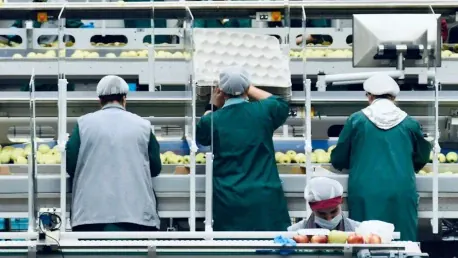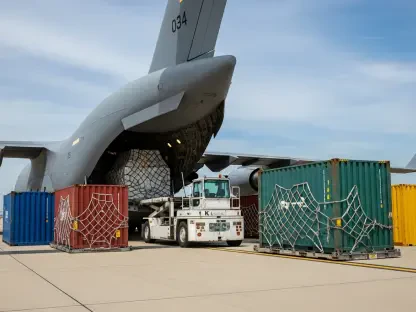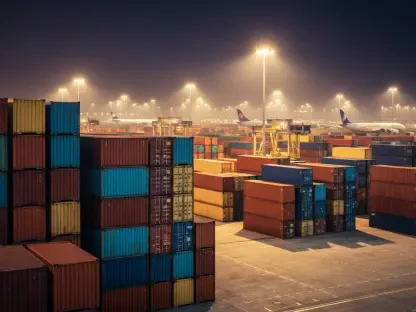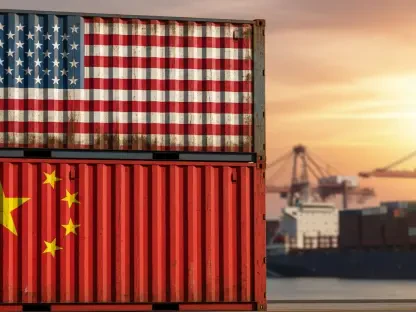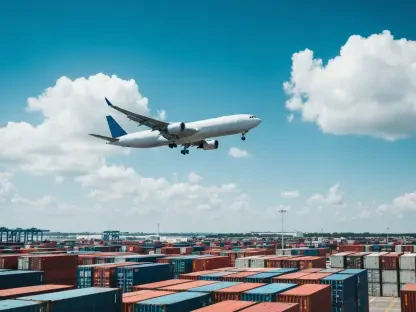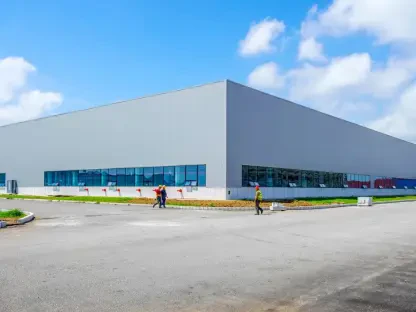Warehouse robotics is revolutionizing logistics and warehousing, ensuring that operations become more efficient, safe, and productive through several technological and operational advancements. This transformation is driven by the need to optimize fulfillment processes, address labor shortages, control costs, and enhance sustainability. As the pressure to meet accelerating consumer demands intensifies, robotics has become indispensable in modern warehouses. This article delves into how robotics is reshaping the industry, highlighting key trends, benefits, and challenges.
A Need for Speed and Efficiency
The logistics industry constantly faces the challenge of expediting fulfillment processes to meet rising consumer expectations, which necessitates the optimization of warehouse operations. Robotics technology enhances speed, productivity, and accuracy by automating repetitive tasks and optimizing workflows through human-robot collaboration. This synergy is pivotal in improving various aspects of warehouse operations, allowing companies to keep pace with market demands. Robots excel in performing repetitive tasks with greater precision than humans, significantly reducing errors and increasing output.
By integrating robotics, warehouses can maintain high standards of accuracy, ensuring faster and correct deliveries, which is critical for customer satisfaction. Furthermore, human-robot collaboration allows for innovative workflow designs where human workers handle complex tasks while robots manage repetitive and mundane activities. This balanced approach not only improves operational efficiency but also maximizes resource utilization. The ability of robots to execute tasks with consistent precision significantly reduces the margin for error, leading to overall better performance and reliability in meeting customer demands.
Tackling Labor Shortages
The warehousing sector is grappling with an acute labor shortage, especially for tasks that are repetitive and physically demanding, making robots a viable solution by handling these chores and enabling human workers to focus on more intricate and value-added activities. Jasmine Lombardi, Chief Customer Officer at Locus Robotics, notes that this shift not only minimizes injury risks but also boosts job satisfaction. Robots can work tirelessly around the clock, providing a consistent workforce that is not subject to fatigue or human error, which is crucial for maintaining high productivity levels, especially during peak seasons.
The reliability of robotic systems during high-demand periods ensures that warehouses can maintain productivity without compromising worker health and safety. This reallocation of human workers to more meaningful tasks improves employee retention rates, as employees feel more valued and engaged in their roles, reducing turnover and addressing labor shortages in the long run. The consistent operation of robots complements human efforts, leading to smoother and more efficient warehouse operations that can adapt to fluctuating demands.
Cost Control and Competitive Advantage
In an era where cost control is paramount, warehouse robotics presents a significant competitive edge by enabling the reduction of operational costs, particularly labor expenses, while maintaining high service levels. This cost efficiency translates into better competitiveness in a market where margins are thin. Robots can perform tasks at a fraction of the cost of human labor, resulting in substantial savings for warehouses. These savings can be reinvested into other areas of the business, such as expansion or technological upgrades, further solidifying a company’s position in the market.
Additionally, the ability to operate more efficiently allows companies to offer competitive pricing without compromising on quality or service. This capability distinguishes innovative companies from their peers, providing a vital edge in a crowded marketplace. The strategic deployment of robotics ensures operational efficiency, which is critical for maintaining competitive pricing and service quality. Cost control through robotics also allows for better resource allocation, supporting long-term growth and stability.
Enhancing Sustainability
A noteworthy and sometimes overlooked benefit of warehouse robotics is its contribution to sustainability by minimizing waste and energy consumption in warehouse operations, aligning with broader environmental goals. Automated systems are generally more precise, leading to less material wastage and more efficient energy use. Sustainable practices are increasingly important to consumers and stakeholders, making the adoption of robotics beneficial not just operationally, but also from a corporate social responsibility perspective.
Efficient robots contribute to a smaller carbon footprint for the warehouse, promoting environmental stewardship. Additionally, sustainability efforts often lead to additional cost savings. Reduced waste and energy consumption cut down on operational expenses, adding another layer of financial benefit to the adoption of robotics. These integrated sustainability measures ensure warehouses not only contribute positively to the environment but also enhance their reputation among eco-conscious consumers and partners.
Security in Warehouse Robotics
While the advantages of warehouse robotics are numerous, integrating these advanced systems brings significant security considerations. Ensuring both efficiency and security can be challenging, as highlighted by Fouad Khalil, Senior Director of Enterprise Security at Locus Robotics. A comprehensive understanding of physical and digital security threats is necessary to protect warehouse operations. Security awareness training is fundamental to enhancing security protocols, ensuring employees are regularly updated on potential threats and equipped with the knowledge to respond effectively.
Employees represent the first line of defense against security breaches, and regular training ensures that the human element of the security chain remains robust. Partnering with mature solution providers with proven security and compliance programs is essential. These providers offer tested strategies for mitigating various security challenges, which is crucial for the seamless integration of new technologies into existing operations. Robust security measures protect not only the technological investments but also the data and intellectual property vital to warehouse operations.
Technological Integration and Evolution
The advancements in robotics technology are not limited to basic functionalities but extend to innovations in AI, machine learning, and integrated software systems that enable more autonomous and sophisticated warehouse operations. ABB’s next-gen robotics control platform, OmniCore, for instance, combines AI, sensors, cloud, and edge computing for advanced applications that enhance efficiency and autonomy. Collaborative robotics, or cobots, are designed to work alongside human workers, improving both safety and efficiency. Tompkins Robotics’ tSortPost exemplifies how cobots can handle various logistics tasks, streamlining operations seamlessly.
The integration of AI and machine learning enables the processing and analysis of vast amounts of data, leading to more informed decision-making. The rise of Gen AI in warehousing unlocks new levels of efficiency and operational insight, allowing for predictive analytics and more proactive management strategies. Furthermore, incorporating advanced software systems ensures a cohesive digital ecosystem within the warehouse, improving coordination and efficiency.
Autonomous Mobile Robots (AMRs) and Advanced Software
Warehouse robotics is transforming the logistics and warehousing sectors, enhancing efficiency, safety, and productivity. This shift is propelled by several technological and operational advancements designed to improve fulfillment processes, tackle labor shortages, reduce costs, and promote sustainability. In today’s fast-paced world, where consumer demands are growing exponentially, the role of robotics in modern warehouses has become crucial. By automating various tasks, robots are facilitating a more streamlined workflow, drastically reducing human error, and minimizing the need for manual labor in repetitive or dangerous tasks.
One of the key trends in this evolution is the integration of advanced AI and machine learning technologies. These innovations enable robots to perform complex tasks with a higher degree of accuracy and adaptability. Additionally, the use of collaborative robots, or cobots, is on the rise, working alongside human workers to enhance productivity and safety.
Despite the many benefits of warehouse robotics, challenges remain. High initial investment costs and the need for continuous system updates and maintenance can be significant hurdles. However, as technology advances and becomes more cost-effective, the adoption of robotics in warehouses is expected to continue growing, further revolutionizing the industry. This article explores the crucial trends, benefits, and existing challenges, offering a comprehensive overview of how robotics is reshaping warehousing.
